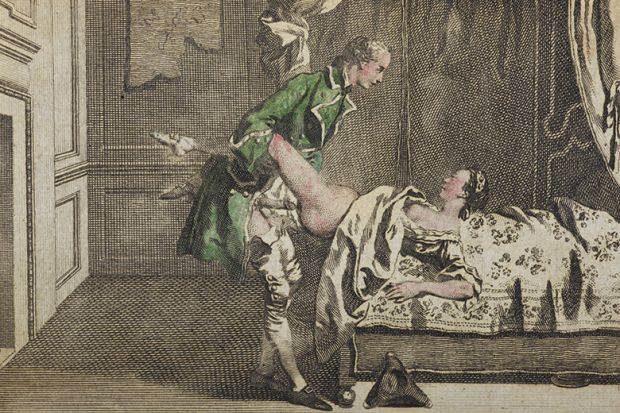If you think that people in the past were either buttoned up or sexually naive, then Amatory Pleasures is for you. The 18th-century sexual imaginary was fertile, including sodomy, adultery, high-class courtesans, flagellation, defloration and a rich set of metaphors that presented men’s and women’s bodies as plants or landscapes. In her general account of this 18th-century erotic imagination, Julie Peakman combines some of her own research with a synthesis of other work in the field. Consisting primarily of essays already published between 1998 and 2015, there is no principal argument but rather a survey of the many diverse ways in which sex was presented in medical, erotic and pornographic writing. If you want to know when the dominant female flagellant became common in English pornography and which medical ideas were taken up in erotica, this book will tell you. And if you happen to be curious about political networking among women, a “bonus chapter” on the friendship between Emma Hamilton and Queen Maria Carolina of Naples, perhaps thrown in as an afterthought, will satisfy you.
Peakman refuses to engage conceptually with the topic, avoiding “self-indulgent over-theorizing or using convoluted language”. Her intention is “a general understanding in history of what was really going on in the world”, deploying “straightforward language, stories of people”. How wonderful it would be to read a history of sexuality in which real people and what happened to them took centre stage. But Peakman’s unusual disclaimer falls flat. With the history of sexuality, as with so much of private or intimate life in the past, historians struggle to find out “what was really going on”. To do so, we have to scour people’s own private documents or piece together the rare details that often emerge incidentally in the archives, in court cases for example. We have to apply the carefully honed methods of social historians to reconstruct past practice, sifting it from the morass of evidence about what people wanted to do, wished they could do or pretended to have done. Yet Peakman chooses not to do this. Instead, she tends to limit her own research to the literary and artistic sources of the 18th century. She then disdains to deploy the very tools and approaches perfected by decades of scholars to scrutinise these sources. It is an incautious historian of “culture” who takes on Michel Foucault – perhaps the most important theorist in this area – and dispatches with his approach in one single rhetorical question. Peakman is poorly equipped to deliver on her promise and relate her sources to people’s lived lives.
We know that the most important changes in the history of sexuality include what people thought about sex as much as what they did. Far from being self-indulgent over-theorising, acknowledging this is crucial to the historian’s ambition to discover “what was really going on”. After all, ask two people who had sex together last night “what was really going on” and you are likely to get two very different answers. Was it love? Duty? Service? Pleasure? Pain? Or going through the motions while silently running through tomorrow’s to-do list? Historians still have plenty of work to do if we are to understand properly the sex lives of everyman and everywoman in the 18th century.
Karen Harvey is professor of cultural history, University of Sheffield.
Amatory Pleasures: Explorations in Eighteenth-Century Sexual Culture
By Julie Peakman
Bloomsbury, 240pp, £85.00 and £21.99
ISBN 9781474226431, 6448 and 6462 (e-book)
Published 6 October 2016
POSTSCRIPT:
Print headline: Lie back and think of Foucault
Register to continue
Why register?
- Registration is free and only takes a moment
- Once registered, you can read 3 articles a month
- Sign up for our newsletter
Subscribe
Or subscribe for unlimited access to:
- Unlimited access to news, views, insights & reviews
- Digital editions
- Digital access to THE’s university and college rankings analysis
Already registered or a current subscriber? Login






